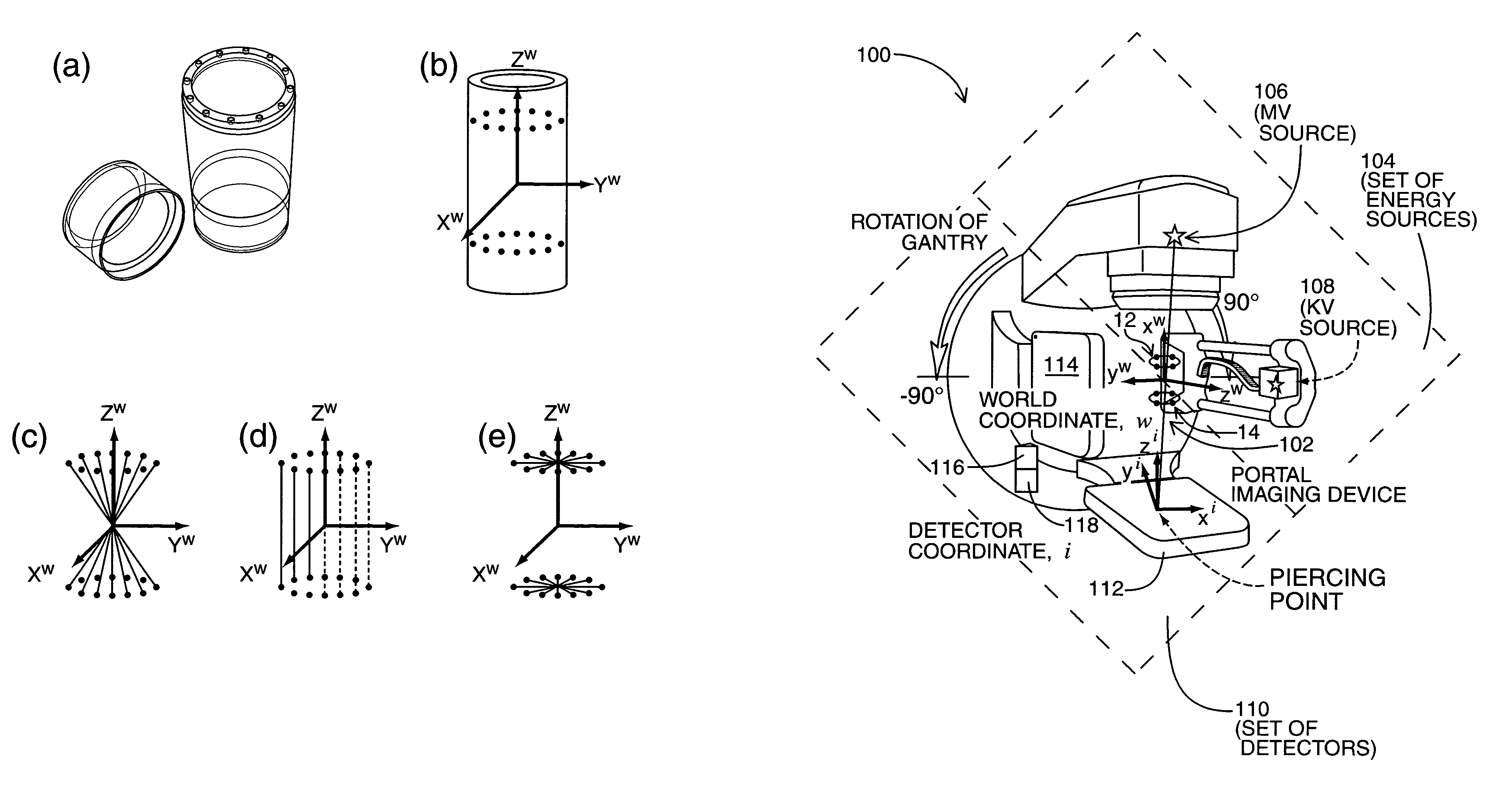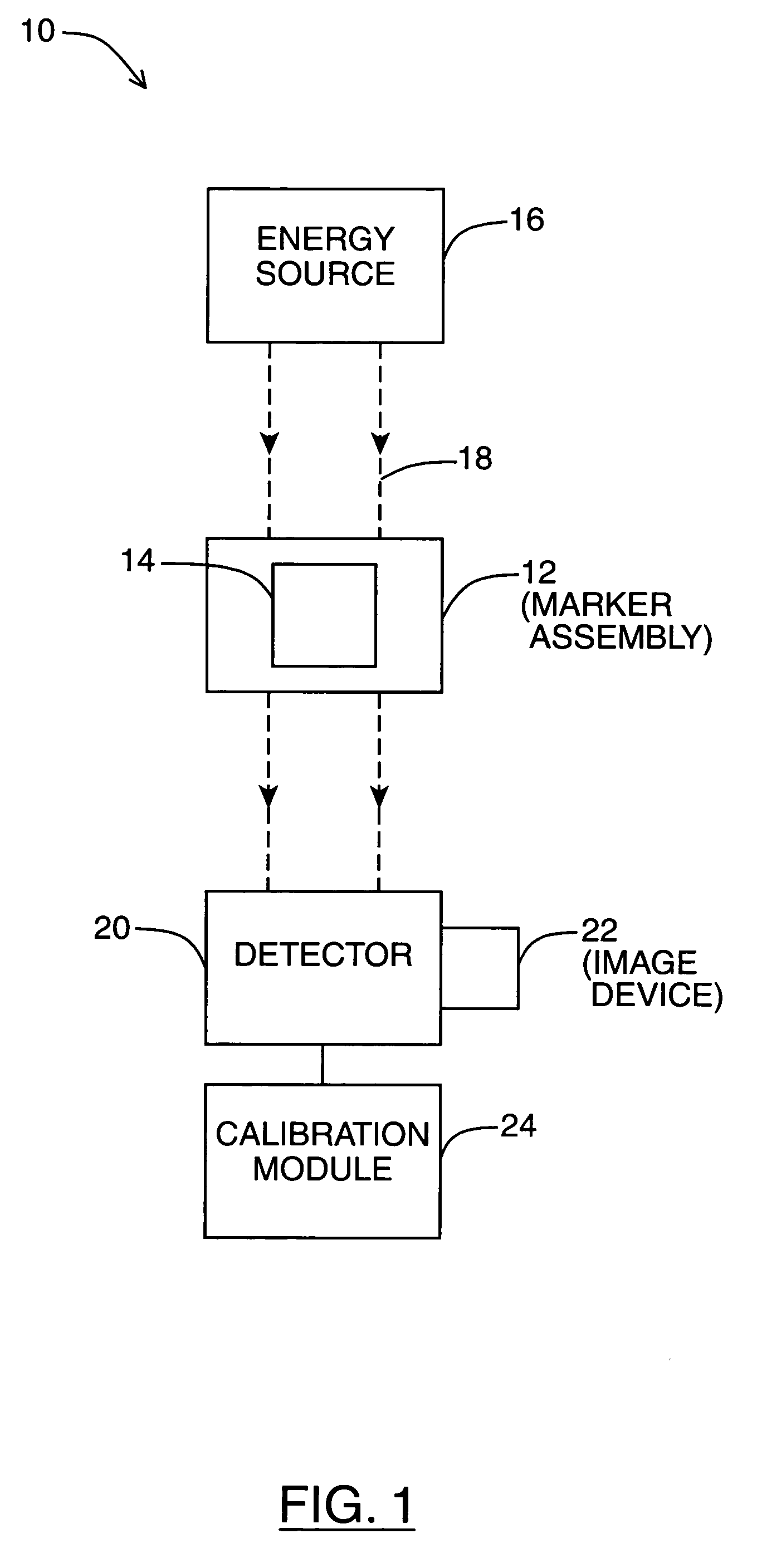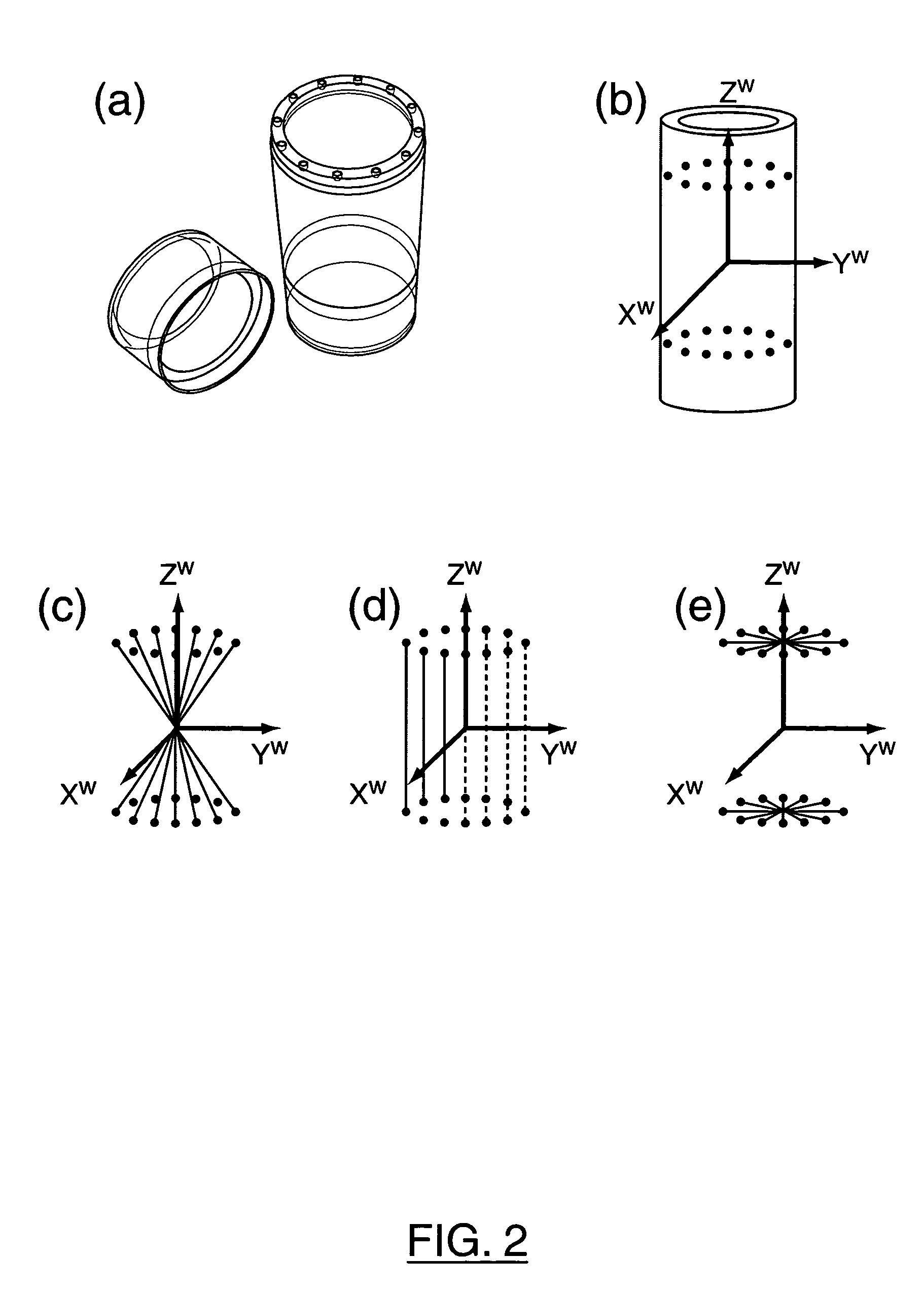Method and system for calibrating a source and detector instrument
a detector and source technology, applied in the field of source and detector instruments, can solve the problems of perturbation denigration of performance, severe artifacts, and deviations from ideal behavior, and achieve the effects of fast, accurate and generalization
- Summary
- Abstract
- Description
- Claims
- Application Information
AI Technical Summary
Benefits of technology
Problems solved by technology
Method used
Image
Examples
Embodiment Construction
[0034]FIG. 1 shows a box-diagram of a calibration system 10 for calibrating a source and detector instrument. For example, the source and detector instrument can be an imaging instrument used to image a body part, such as a radiography, a stereography, a bi-plane imaging, a fluoroscopy, a tomosynthesis or a tomography instrument.
[0035]The calibration system 10 includes a “phantom” or marker assembly 12 having a plurality of markers 14 whose locations with respect to one another is known. The calibration system 10 further includes an energy source 16 that can emit energy packets 18, a detector 20, an image device 22, and a calibration module 24.
[0036]The energy source 16 targets the plurality of markers 14 with energy packets 18. The energy source 16 can include an x-ray, a gamma ray, an atomic, a sub-atomic, an optical photon, an electromagnetic wave, an x-ray tube, a particle accelerator or a radionuclide source.
[0037]The detector 20 detects energy packets after the plurality of ma...
PUM
 Login to View More
Login to View More Abstract
Description
Claims
Application Information
 Login to View More
Login to View More - R&D
- Intellectual Property
- Life Sciences
- Materials
- Tech Scout
- Unparalleled Data Quality
- Higher Quality Content
- 60% Fewer Hallucinations
Browse by: Latest US Patents, China's latest patents, Technical Efficacy Thesaurus, Application Domain, Technology Topic, Popular Technical Reports.
© 2025 PatSnap. All rights reserved.Legal|Privacy policy|Modern Slavery Act Transparency Statement|Sitemap|About US| Contact US: help@patsnap.com



